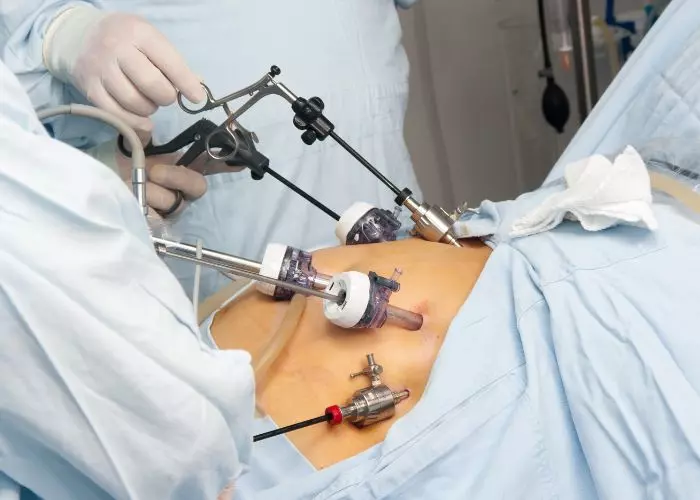After a successful bulking phase, where you focused on building muscle and strength, it’s time to shed the excess fat and reveal the chiseled physique you’ve been working hard for. Cutting weight after bulking is a crucial step for bodybuilders, fitness enthusiasts, and athletes alike.
However, it requires a different approach than bulking, emphasizing a proper balance of nutrition, training, and recovery. In this article, we’ll explore effective strategies to help you achieve to understand How to Cut Weight After Bulking, maintain muscle mass, and attain a leaner, more defined physique.

How to Cut Weight After Bulking: Calculating Your Caloric Needs
To begin your cutting journey, it’s essential to determine your daily caloric needs based on your unique body composition and activity level. While bulking required a caloric surplus to fuel muscle growth, cutting demands a caloric deficit to encourage fat loss.
Calculating your Basal Metabolic Rate (BMR) provides a baseline, and factoring in your activity level helps find your maintenance calories. Gradually reducing your daily intake by 250-500 calories below maintenance is a safe approach, ensuring a steady and sustainable weight loss of around 1-2 pounds per week.

Optimal Macronutrient Ratios
While cutting, prioritizing protein intake is crucial to preserve muscle mass and facilitate proper recovery during this calorie-restricted phase. Aim for approximately 1.2-1.6 grams of protein per kilogram of body weight, providing the essential amino acids necessary for muscle maintenance and repair.
Maintaining an adequate intake of healthy fats and complex carbohydrates is vital for sustained energy levels and overall well-being. Opt for nutrient-dense whole foods, rich in vitamins and minerals, while avoiding processed and sugary treats that can sabotage your progress by adding unnecessary calories and hindering your weight loss efforts.
Strategic Cardio and Training
Incorporate cardiovascular exercises into your routine to boost calorie burn and accelerate fat loss. High-Intensity Interval Training (HIIT) and steady-state cardio are both excellent choices to elevate your heart rate and maximize calorie expenditure. However, don’t overlook the importance of incorporating resistance training.
Maintaining your strength training regimen is crucial as it not only aids in retaining hard-earned muscle mass but also keeps your metabolism revved up. Combining cardiovascular workouts with resistance training creates a powerful synergy, helping you achieve your cutting goals efficiently while promoting overall strength and fitness.

Stay Hydrated and Sleep Sufficiently
Proper hydration is often underestimated, yet it remains a cornerstone for overall health and successful weight loss. Staying well-hydrated aids digestion, curbs unnecessary appetite, and supports an optimal metabolic rate. Additionally, ensuring you get 7-9 hours of quality sleep each night is equally vital.
During sleep, your body undergoes essential processes, such as muscle recovery and hormone regulation, crucial for effective cutting. Prioritize both hydration and ample sleep to maximize the benefits of your cutting journey, enhancing your energy levels, cognitive function, and overall well-being while achieving your desired physique.

Monitor Progress and Adjust
Consistently tracking your progress is a vital aspect of successful cutting. Besides measuring body weight, body fat percentage, and taking progress photos, it’s equally important to consider how you feel, your energy levels, and overall well-being. These non-scale victories reflect changes beyond mere numbers.
If needed, be open to making adjustments in your nutrition and training plan to ensure steady progress. Remember, the cutting journey is unique to each individual, so staying attuned to your body’s signals and being adaptable in your approach will lead you to the best possible results. We invite you to read another article about How Much Weight Do You Lose with Liposuction.
Frequently Asked Questions
Why is proper hydration essential during the cutting phase?
Proper hydration is crucial during cutting as it aids digestion, curbs appetite, and supports an optimal metabolic rate. Staying well-hydrated ensures your body functions optimally, making it easier to achieve your weight loss goals effectively and maintain overall well-being throughout your cutting journey.
What are some recommended cardiovascular exercises for cutting?
High-Intensity Interval Training (HIIT) and steady-state cardio are excellent choices for cutting due to their ability to elevate your heart rate, enhance calorie burn, and accelerate fat loss. Incorporating these exercises into your routine will help you achieve your desired results efficiently, making your cutting journey more effective and rewarding.
How can you monitor your progress during the cutting journey?
You can monitor your progress by measuring body weight, body fat percentage, and taking progress photos. However, it’s essential not to solely rely on the scale. Considering how you feel, your energy levels, and overall well-being provides a more comprehensive evaluation.
What role does resistance training play during cutting?
Resistance training is crucial during cutting as it helps preserve muscle mass and keeps your metabolism elevated, even in a calorie deficit. When combined with cardiovascular exercises, this powerful synergy accelerates fat loss while ensuring you retain strength and overall fitness, leading to a well-defined and toned physique.
What should be the weekly weight loss target during cutting?
A safe and sustainable weight loss target during cutting is around 1-2 pounds per week. Gradual weight loss allows you to preserve muscle mass while shedding unwanted body fat, ensuring you achieve a leaner and more defined physique without compromising your health.
Conclusión
Cutting weight after bulking is a challenging yet rewarding process that requires discipline and determination. By calculating your caloric needs, focusing on macronutrient ratios, incorporating smart training strategies, staying hydrated, and monitoring progress, you can achieve your cutting goals effectively.
Remember that patience and consistency are key. Embrace the journey, celebrate your progress, and step into a leaner and more defined version of yourself. Always consult with a healthcare or fitness professional before making significant changes to your diet or exercise routine. Happy cutting!






















